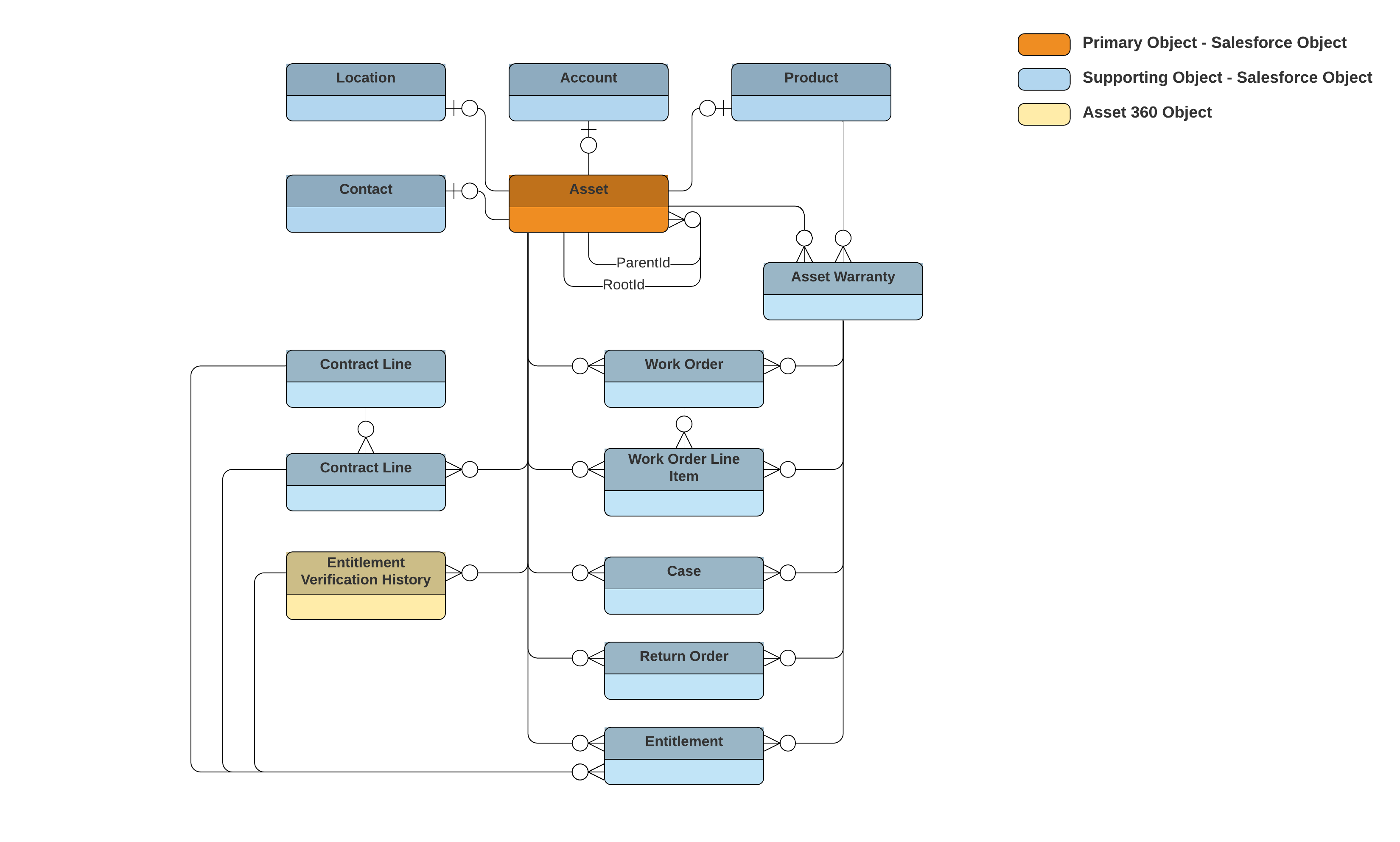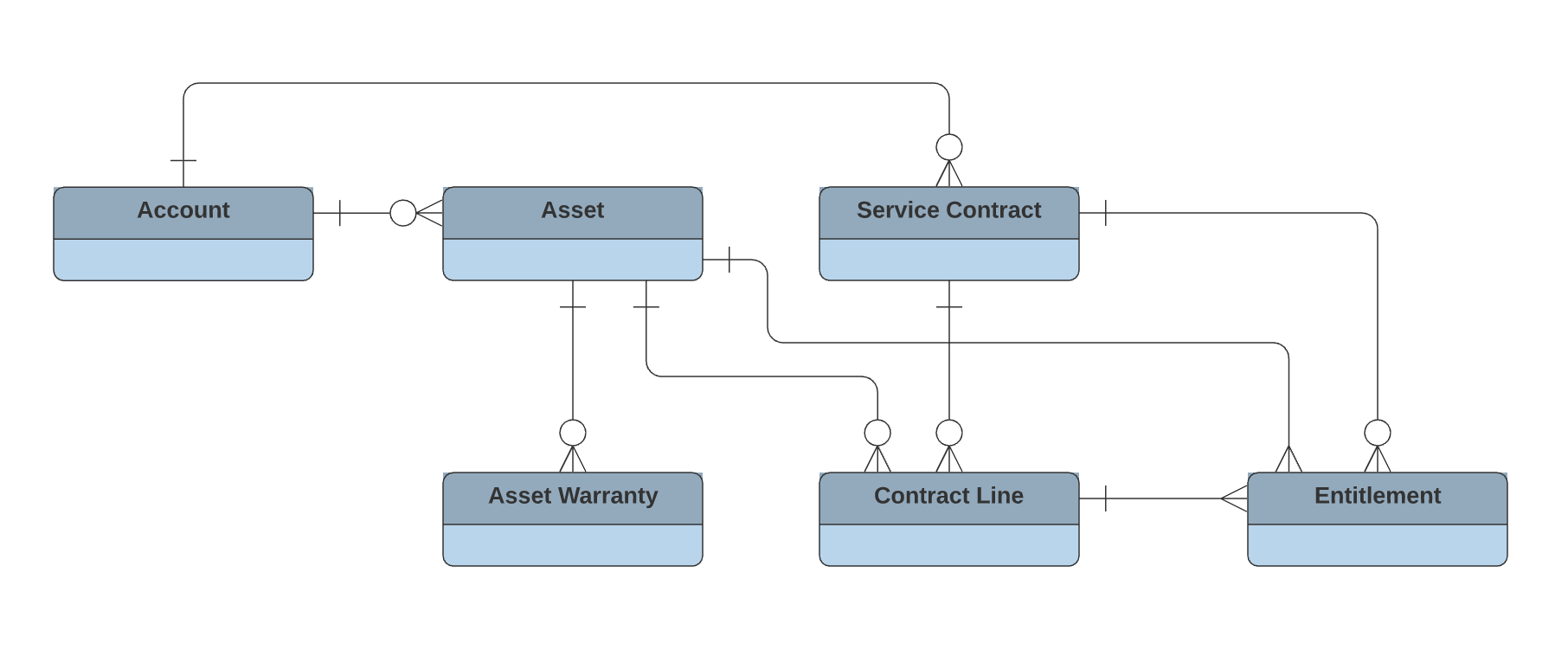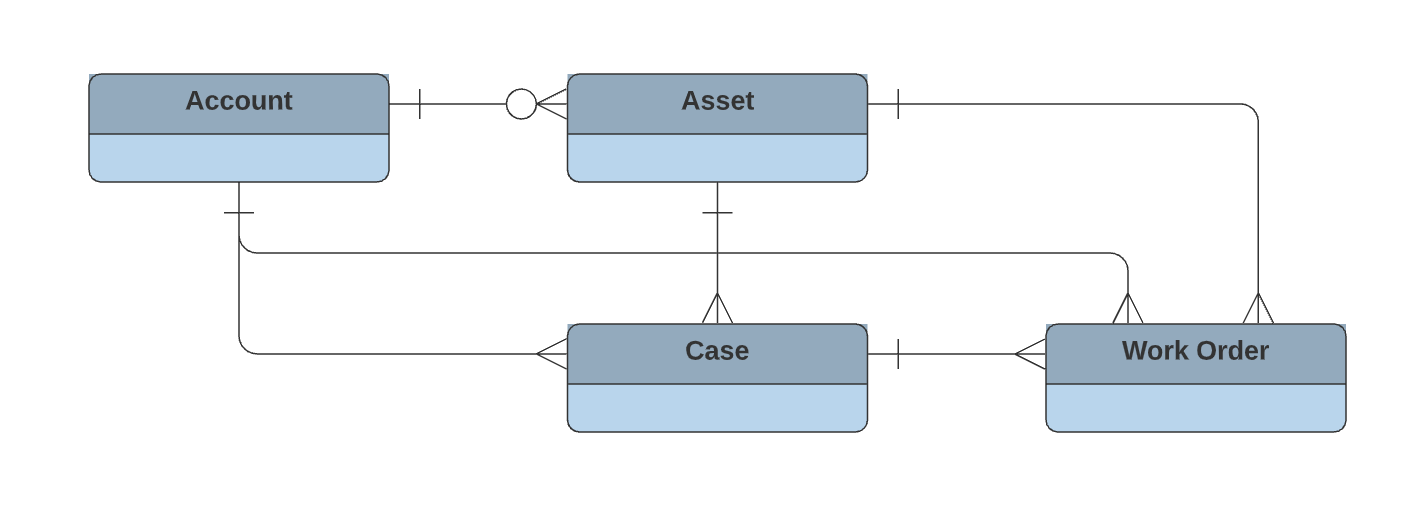Asset Management Data Model
An Asset represents an item of commercial value, such as a product sold by your company or a competitor, that a customer has purchased and installed. An Asset can be associated with many types of records.

An asset has the following references:
• Product - a reference to the product catalog
• Account - Asset has multiple references to Account to represent ownership, distributor, and serviceability.
• Location - Physical location of the Asset; this can be maintained at the street address or more granular regarding the location within a structure.
• Asset - Maintains the Asset Hierarchy tree, always having a reference to its immediate parent and root.
Assets can be Customer-owned Assets, Competitor's Assets at the Customer site, or Rental/Loaner equipment. You can link assets to maintenance plans, service contracts, asset warranty, work orders, accounts, locations, and more so your support and service team can quickly assess the history of a customer’s product.
Asset with Entitlement
An Asset can be covered from a service perspective by a manufacturing warranty or a service contract.

An Asset Warranty is an agreement between a manufacturer and end-customer. The manufacturer repairs or replaces a product for any manufacturing or quality defects within a limited timeframe.
Typically, there are two warranty types - a Standard Manufacturer’s Warranty and a Repair Warranty.
Once the manufacturer sells its products, the customer-owned products are known as Assets, and the assets typically get a Standard Manufacturer’s Warranty. When Service Providers and Original Equipment Manufacturers (OEM) provide a paid service, customers typically receive a Repair Warranty (for example, a warranty of 90 days).
Service Entitlement engine accurately associates the services entitled to warranties and service contracts of Account and Assets Bill of Materials. Call center agents and technicians can accurately quote to avoid revenue leakage and discover upsell opportunities.
A Service Contract is a promise to perform (or pay for) certain repairs or services. Usually, an agreement between a manufacturer/service provider and their end customer will purchase coverage for the product with agreed-upon terms and conditions.
Asset 360 leverages the Service Contracts, Milestones, Entitlement Process, and Contract Line Items from Salesforce Field Service for automatic or interactive entitlement of the Service Contracts.
Asset Service
An asset can be serviced primarily in two ways:
• Case
• Work Order

Work Orders represent the work to be completed for your customers and are central to field operations in Asset 360. To divide the work further for billing purposes or to track subtasks, add work order line items, which are the child records of work orders.
Work orders offer a great deal of flexibility. They can be associated with many types of records, including:
• Assets, to track work performed on a specific asset.
• Cases, to indicate that the work is being performed as part of a customer case.
• Accounts and contacts, representing the customer.
• Entitlements and service contracts indicate that the work is being done to fulfil a service-level agreement.
When a customer contacts an issue, the remote engineer tries for remote triage to resolve the issue. To do so, the remote technician searches for the Asset first. The technician checks the Account details of the Asset. Then, the technician creates a Case from the asset for the issue. The technician also creates a Remote Work Order to fix the issue remotely. While creating a Work Order, all the Account, Asset, and Case details are auto-populated. The Work Order is created with the covered Service Contract if entitled.
When an Asset is serviced, the Entitlement engine determines if the asset is covered under Warranty or Contract.